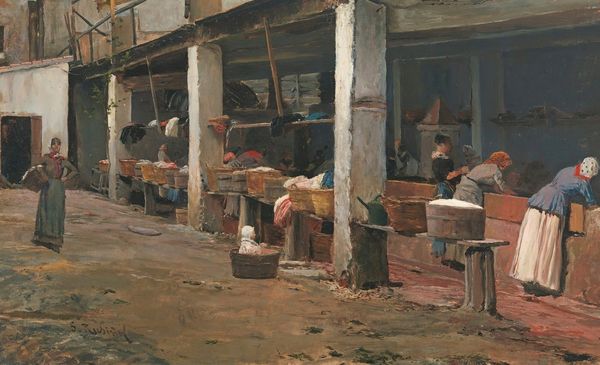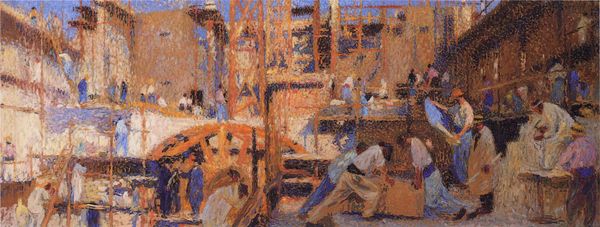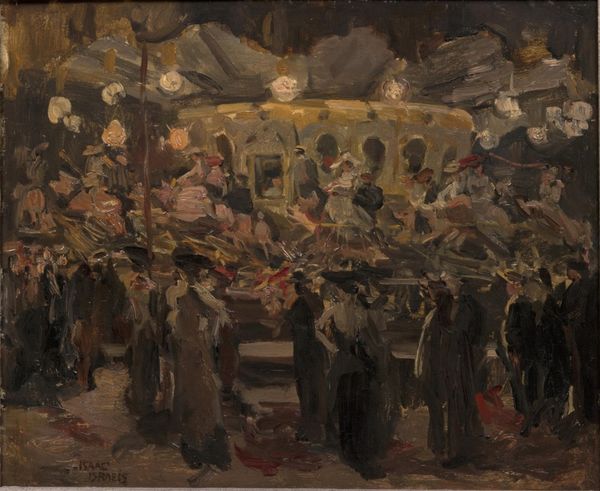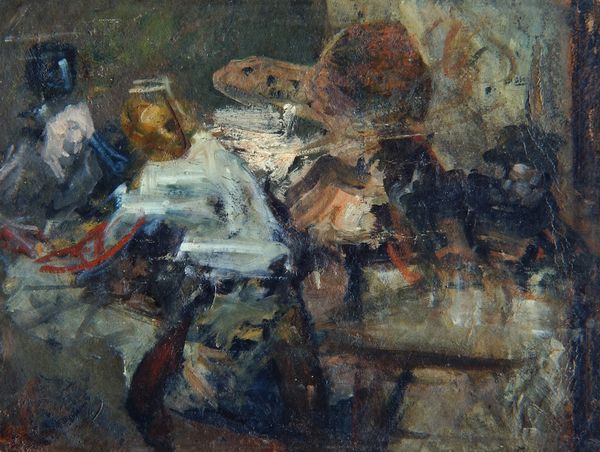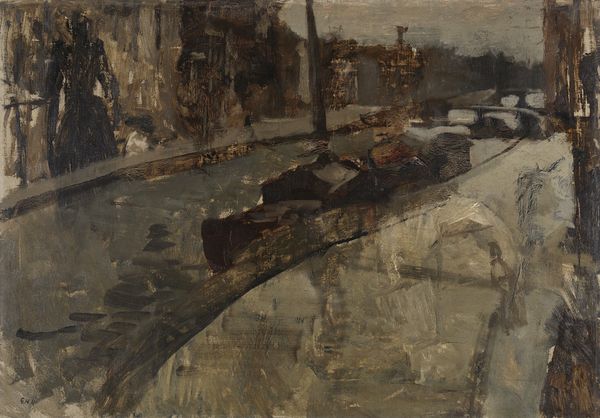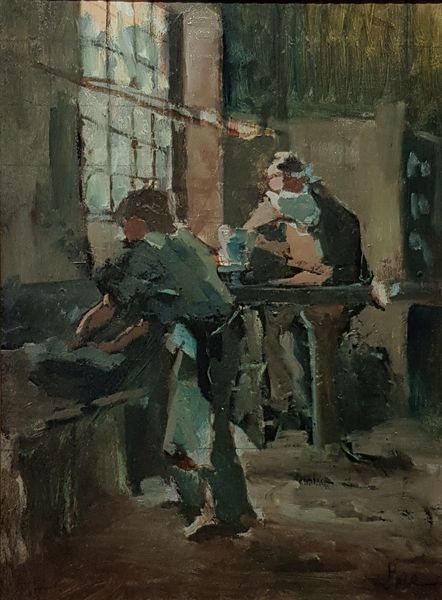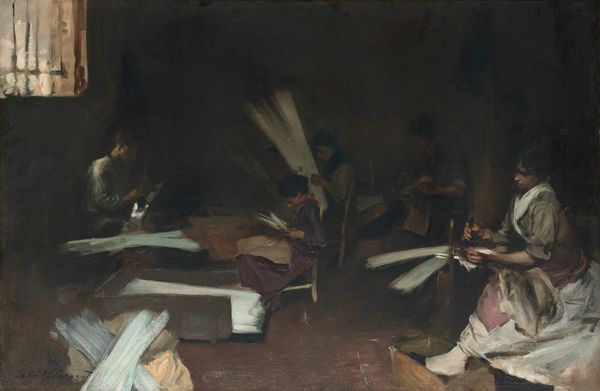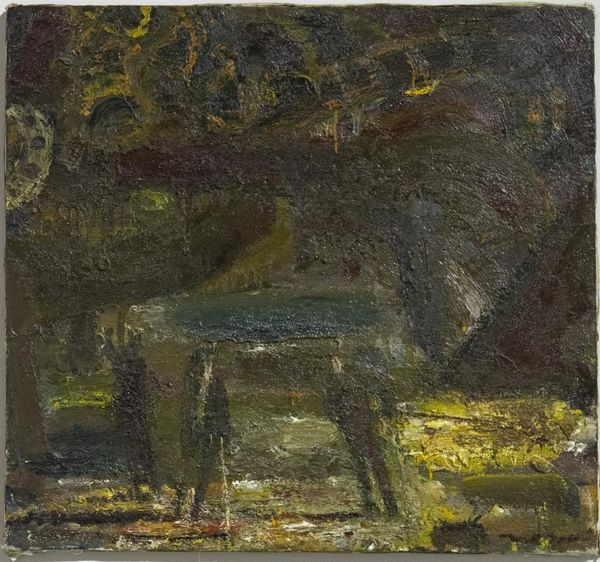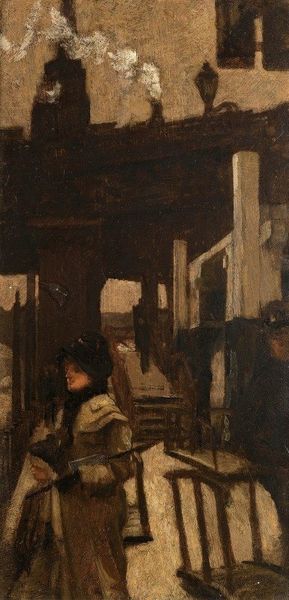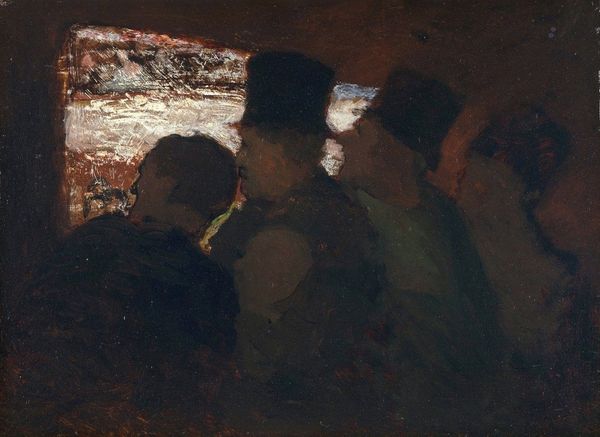
Copyright: Public Domain: Artvee
Curator: This is John Singer Sargent’s "The Weavers," painted in 1912 using oil on canvas. What strikes you most when you first view it? Editor: The immediate feeling is almost claustrophobic, even a bit Dickensian. The dim lighting, the cluttered foreground...it suggests a story of labor and enclosure. Curator: Absolutely. The weavers, primarily men it seems, are caught in this shadowy space. It reminds us of social realities often hidden in plain sight, wouldn't you say? Editor: Definitely. The architecture looms and cages the weavers, but Sargent contrasts their workspace with a glimpse of outdoor life, perhaps some clothes hanging on the sun to dry... the implications are quite striking, offering freedom elsewhere. Curator: That sliver of daylight is potent. In terms of symbolism, it’s a whisper of hope. Do you sense any symbolic import in the act of weaving itself, within this particular scene? Editor: Weaving has ancient associations, doesn’t it? It’s the work of female domesticity, here taken by men... But perhaps Sargent wants to speak of industry transforming identities. Do we see this tension in his time? Curator: Exactly. Sargent captures the societal shifts of early 20th century—the weaving and unweaving of social roles. Do you also see that woven textures, are, too, metaphors, both for lives and fates intertwined? Editor: I hadn’t considered it so explicitly, but yes. It speaks volumes about collective efforts—and potential entanglements! Also it could reflect cultural memories in how cloth functions for groups identity. Curator: Sargent leaves room for diverse meanings, creating visual poetry. He avoids prescribing narratives to his figures, but reminds us that they operate under forces beyond them. What will you remember after seeing this painting? Editor: The feeling of being simultaneously enclosed and connected – a powerful visual representation of early 20th-century realities. It reminds us, I suppose, that some threads never truly break. Curator: For me, it is Sargent's rendering of humanity. Even the shadows tell stories. We, the viewers, get to interpret that collective tale.
Comments
No comments
Be the first to comment and join the conversation on the ultimate creative platform.


